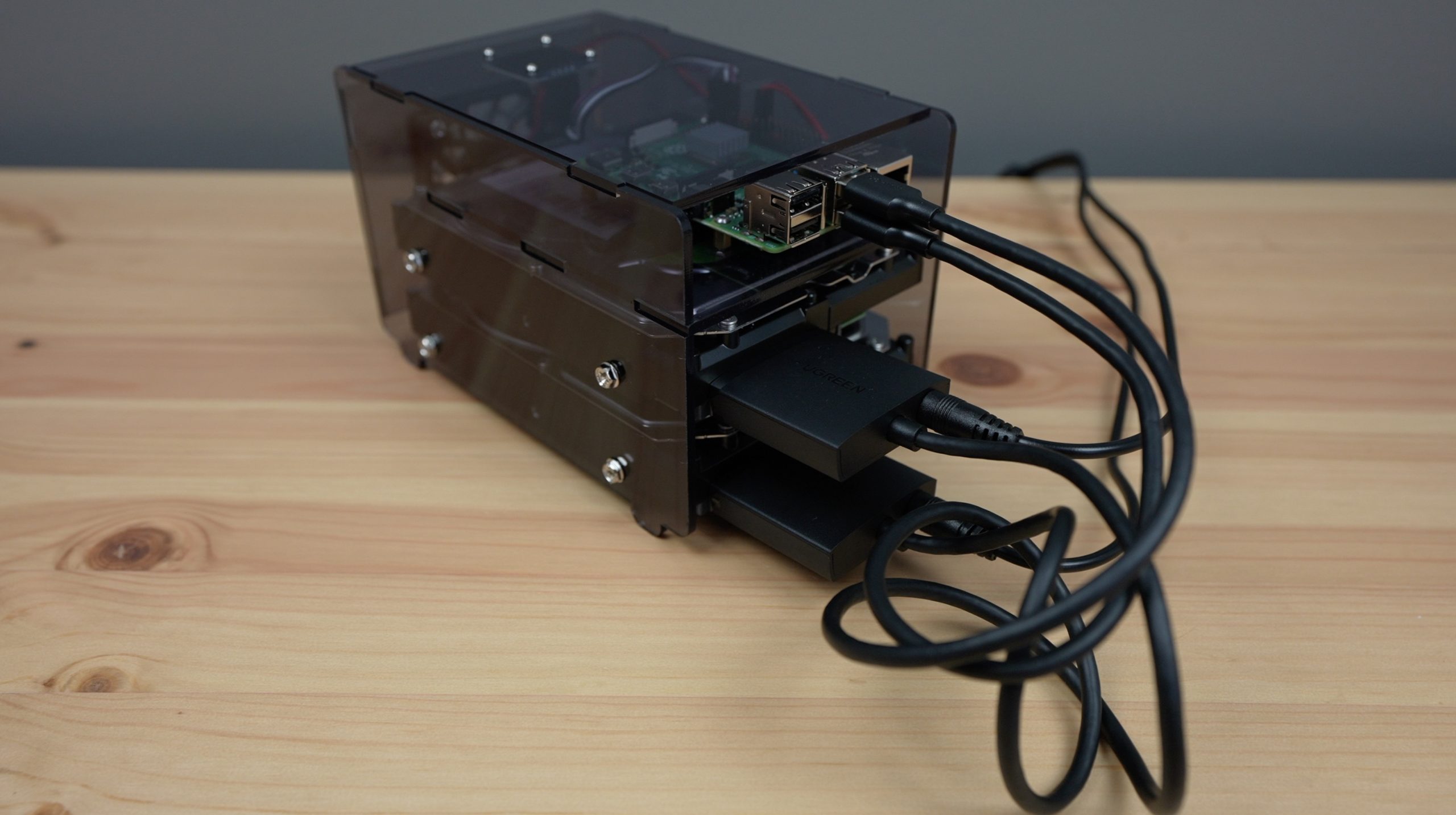Best Raspberry Pi Remote IoT Free Solutions For Your Smart Projects
Hey there, tech enthusiasts! If you've ever wondered how to get started with Raspberry Pi Remote IoT projects without breaking the bank, you're in the right place. The world of IoT is expanding rapidly, and Raspberry Pi is one of the most popular platforms for creating smart, connected devices. In this article, we’ll dive deep into the best Raspberry Pi Remote IoT free options that will help you bring your ideas to life without spending a fortune. So, buckle up and let’s explore the endless possibilities of IoT with Raspberry Pi!
Whether you're a beginner or an experienced maker, the Raspberry Pi ecosystem offers a ton of opportunities to experiment with remote IoT setups. From monitoring environmental conditions to controlling smart home devices, there’s something for everyone. And the best part? You don’t have to invest in expensive software or subscriptions. There are plenty of free tools and solutions that can get the job done.
This guide will walk you through everything you need to know about setting up remote IoT projects using Raspberry Pi. We’ll cover the basics, highlight some awesome free tools, and share tips and tricks to help you succeed. By the end of this article, you’ll have all the knowledge you need to start building your own IoT projects. Let’s get started!
Read also:Sonya Nicole Hamlin The Rising Star In The Spotlight
Table of Contents
- Introduction to Raspberry Pi Remote IoT Free
- Raspberry Pi Basics: What You Need to Know
- Why Choose Remote IoT for Your Projects?
- Best Free Tools for Raspberry Pi Remote IoT
- Step-by-Step Setup Guide
- Creative Project Ideas for Raspberry Pi Remote IoT
- Common Issues and Troubleshooting Tips
- Ensuring Security in Your Remote IoT Setup
- Leveraging Community Support for Success
- Conclusion: Start Building Your Dream IoT Projects
Introduction to Raspberry Pi Remote IoT Free
Alright, let’s kick things off with a quick overview of what we’re talking about here. Raspberry Pi Remote IoT free solutions are basically ways to connect your Raspberry Pi to the internet and control or monitor devices remotely, all without paying for pricey software. It’s like having a tiny computer that can talk to other gadgets and share data over the web, but without the hefty price tag.
Raspberry Pi has become the go-to platform for hobbyists, educators, and professionals alike. Its affordability, versatility, and community support make it an ideal choice for anyone looking to dive into the world of IoT. And when you combine it with free tools and platforms, the possibilities are limitless.
In this section, we’ll explore why remote IoT is such a big deal and how Raspberry Pi fits into the picture. We’ll also touch on some of the benefits of using free tools for your projects. So, if you’re ready to learn more, keep reading!
Raspberry Pi Basics: What You Need to Know
Before we dive into the nitty-gritty of remote IoT, let’s take a moment to cover the basics of Raspberry Pi. For those who are new to this awesome little device, here’s a quick rundown:
- Raspberry Pi is a single-board computer that’s small, affordable, and incredibly powerful.
- It runs on Linux-based operating systems, which makes it highly customizable and flexible.
- It’s equipped with GPIO pins, which allow you to connect sensors, actuators, and other hardware components.
- It’s perfect for a wide range of applications, from home automation to industrial projects.
Now, when it comes to remote IoT, Raspberry Pi really shines. With its ability to connect to the internet and communicate with other devices, it’s the perfect platform for building smart, connected systems. Plus, with the right software and tools, you can control your projects from anywhere in the world. How cool is that?
Why Raspberry Pi is Ideal for Remote IoT
There are a few key reasons why Raspberry Pi is the perfect choice for remote IoT projects:
Read also:Kylie Jenner Net Worth The Untold Story Of A Young Billionaire
- Cost-Effective: Raspberry Pi is one of the most affordable single-board computers on the market, making it accessible to hobbyists and professionals alike.
- Versatile: With its wide range of input/output options and support for various programming languages, Raspberry Pi can handle just about any IoT project you can think of.
- Community Support: The Raspberry Pi community is huge, and there’s no shortage of tutorials, forums, and resources to help you along the way.
So, if you’re looking to get started with remote IoT, Raspberry Pi is definitely worth considering. And with so many free tools available, you can keep your costs down while still achieving great results.
Why Choose Remote IoT for Your Projects?
Remote IoT offers a ton of benefits that make it an attractive option for both personal and professional projects. Here are just a few reasons why you might want to consider incorporating remote IoT into your Raspberry Pi setup:
- Convenience: With remote IoT, you can monitor and control your devices from anywhere in the world. This is especially useful for home automation projects or remote monitoring systems.
- Scalability: Remote IoT setups can be easily scaled to accommodate more devices or more complex systems as your needs grow.
- Data Collection: Remote IoT allows you to collect data from sensors and other devices in real-time, giving you valuable insights into your projects.
Whether you’re building a smart home system, a weather station, or an industrial monitoring solution, remote IoT can help you achieve your goals. And with Raspberry Pi, you can do it all without spending a fortune on expensive hardware or software.
Best Free Tools for Raspberry Pi Remote IoT
Now that you know why remote IoT is so awesome, let’s talk about some of the best free tools you can use with your Raspberry Pi. These tools will help you set up and manage your remote IoT projects without costing you a dime.
1. Node-RED
Node-RED is a popular open-source tool that makes it easy to wire together hardware devices, APIs, and online services. It’s perfect for creating complex IoT workflows without needing to write a ton of code. With Node-RED, you can connect your Raspberry Pi to other devices, process data, and trigger actions with just a few clicks.
2. MQTT
MQTT (Message Queuing Telemetry Transport) is a lightweight messaging protocol that’s ideal for IoT applications. It allows devices to communicate with each other over the internet, even when bandwidth is limited. With MQTT, you can send and receive data between your Raspberry Pi and other devices with ease.
3. InfluxDB
InfluxDB is a time-series database that’s perfect for storing and analyzing data from IoT sensors. It’s fast, efficient, and easy to use, making it a great choice for Raspberry Pi projects. With InfluxDB, you can store data from your sensors and analyze it to gain valuable insights into your projects.
Step-by-Step Setup Guide
Ready to get started with your Raspberry Pi Remote IoT project? Here’s a step-by-step guide to help you set up your system:
- Install the Operating System: Start by installing the latest version of Raspberry Pi OS on your device.
- Connect to the Internet: Make sure your Raspberry Pi is connected to the internet via Wi-Fi or Ethernet.
- Set Up SSH: Enable SSH on your Raspberry Pi so you can access it remotely from another computer.
- Install Required Software: Install the free tools you’ll need for your project, such as Node-RED, MQTT, and InfluxDB.
- Configure Your Devices: Connect your sensors and other devices to your Raspberry Pi and configure them to work with your chosen software.
With these steps, you’ll have your Raspberry Pi Remote IoT system up and running in no time. And the best part? You didn’t have to spend a penny on software or subscriptions.
Creative Project Ideas for Raspberry Pi Remote IoT
Now that you know how to set up your Raspberry Pi Remote IoT system, let’s talk about some cool project ideas to get your creative juices flowing:
- Smart Home Automation: Use your Raspberry Pi to control lights, thermostats, and other smart home devices from anywhere in the world.
- Weather Station: Build a weather station that collects data from sensors and sends it to a cloud-based dashboard for real-time monitoring.
- Remote Camera System: Set up a remote camera system that streams live video to your phone or computer.
These are just a few examples of the many projects you can create with Raspberry Pi Remote IoT. The only limit is your imagination!
Common Issues and Troubleshooting Tips
As with any technology, you might run into some issues while setting up your Raspberry Pi Remote IoT system. Here are a few common problems and how to fix them:
- Connection Issues: If you’re having trouble connecting to your Raspberry Pi remotely, make sure SSH is enabled and check your network settings.
- Data Loss: If you’re losing data from your sensors, try increasing the buffer size in your software or optimizing your data collection process.
- Software Conflicts: If your software isn’t working as expected, try updating it to the latest version or reinstalling it.
With these troubleshooting tips, you’ll be able to tackle most issues that come your way. And if you get stuck, don’t hesitate to reach out to the Raspberry Pi community for help.
Ensuring Security in Your Remote IoT Setup
Security is a crucial consideration when it comes to remote IoT. After all, you don’t want unauthorized access to your devices or data. Here are a few tips to help you keep your Raspberry Pi Remote IoT system secure:
- Use Strong Passwords: Make sure to use strong, unique passwords for all your accounts and devices.
- Enable Firewall: Set up a firewall on your Raspberry Pi to block unauthorized access.
- Keep Software Updated: Regularly update your software to ensure you have the latest security patches.
By following these security best practices, you can protect your Raspberry Pi Remote IoT system from potential threats.
Leveraging Community Support for Success
One of the greatest advantages of using Raspberry Pi for your remote IoT projects is the huge community of makers and developers who are ready and willing to help. Whether you’re stuck on a particular problem or just looking for inspiration, the Raspberry Pi community has got you covered.
Some great resources to check out include:
- Raspberry Pi Forums: A great place to ask questions and get answers from other Raspberry Pi enthusiasts.
- GitHub: Find open-source projects and code snippets to help you with your own projects.
- YouTube: Watch tutorials and walkthroughs to learn new skills and techniques.
By leveraging the power of the Raspberry Pi community, you can take your projects to the next level.
Conclusion: Start Building Your Dream IoT Projects
And there you have it, folks! Everything you need to know about the best Raspberry Pi Remote IoT free solutions. From setting up your system to troubleshooting common issues, we’ve covered it all. Remember, the key to success with Raspberry Pi Remote IoT is to experiment, learn, and have fun.
So, what are you waiting for? Grab your Raspberry Pi, download some free tools, and start building your dream IoT projects today. And don’t forget to share your creations with the world – who knows, you might just inspire someone else to join the IoT revolution!
Got any questions or comments? Drop them below, and let’s keep the conversation going. Happy building, and see you in the next project!


